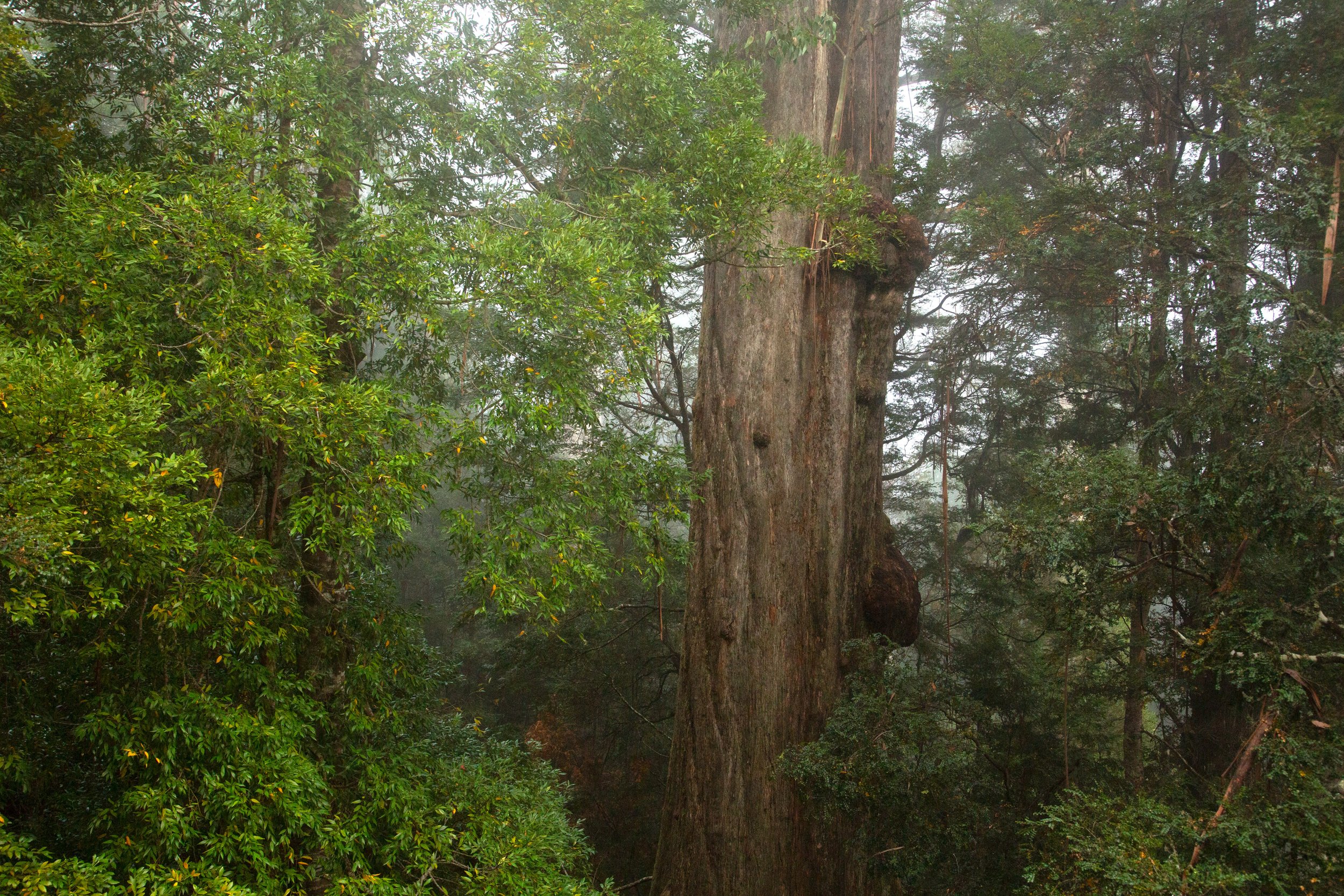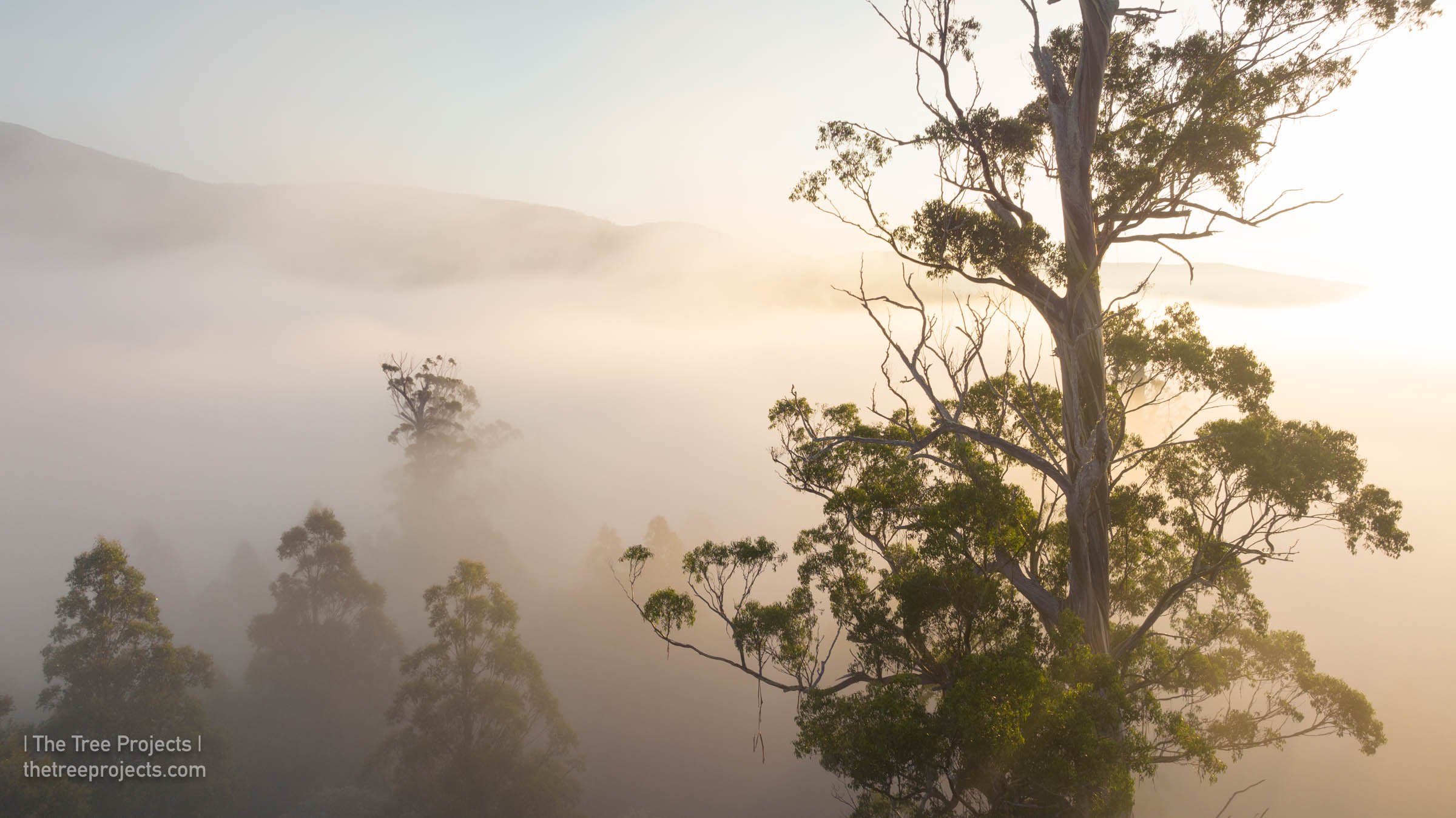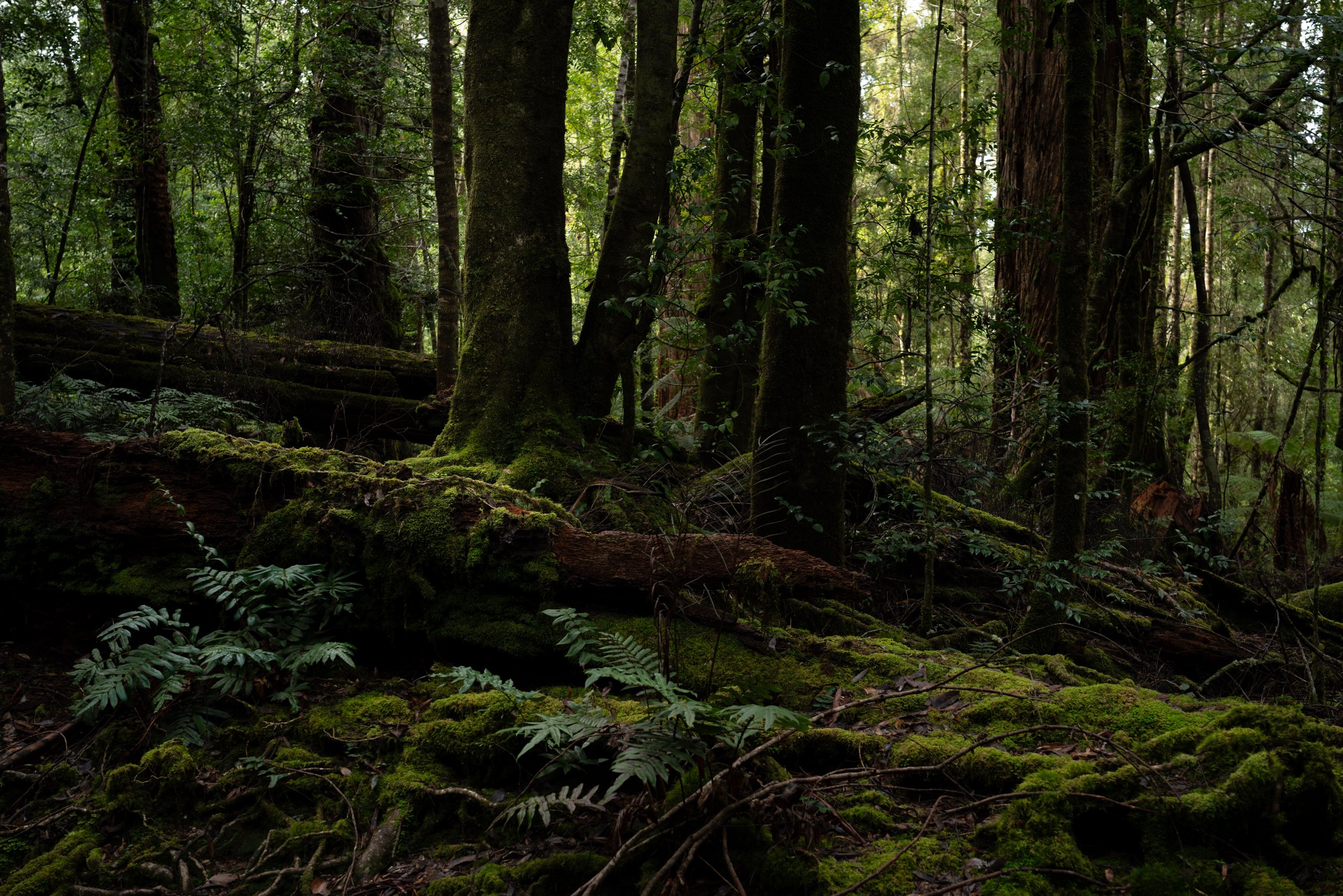
TASMANIA’S GIANT TREES
BIG TREE STATE
introducing…
Your guide to Tasmania’s giant trees.
Big Tree State is our latest venture, its goal is simply to connect people and trees. The website contains essential visitor information about accessible sites with preestablished walking trails. There are also helpful guides to mitigate our collective impacts on the trees.
THE AGENDA
A new generation of big tree hunters dedicated to exploring Tasmania’s forests.
INSPIRE
We do this so that more of tasmania’s giant trees can be discovered, documented and protected.
FUTURE
CULTURE
Elevate Tasmania’s giant trees into the national cultural consciousness focusing on pride and respect.

200+ REGISTERED GIANT TREES,
315 LIDAR HITS 85M+
WE HAVE COLLATED ALL OF OUR INFORMATION GATHERED FROM MANY DIFFERENT SOURCES OVER SEVERAL YEARS AND NOW WE MAKE IT ALL AVAILABLE TO YOU.
HEIGHT
Tall trees are easy to find. State wide LiDar scans have created data sets that make it easy to see the height of trees and their emergence from the lower canopy. LiDar is a method of scanning a broad area with lasers to generate 3D spatial data that is accurate to the centimetre.
While it is possible to still find undocumented tall trees it is increasingly difficult to do so because to the abundance of LiDar scans. We have it of good authority that all trees over 85m have been visited and ground-truthed.
Centurion | Eucalyptus regnans | Height 100.5 | Volume 268 cubic metres |
VOLUME
Volumetric trees are very hard to find. This is the area of most interest to the new generation of Tasmanian big tree hunters. LiDar is unreliable at best in finding these trees because they are often at or below the surrounding canopy layer.
These trees are often much older than the tall trees and as such have lost their height because of snapped out crown structures. However, they continue to grow outwards and draw down immense amounts of atmospheric carbon.
All About That Base | Eucalyptus regnans | Height 61m | Volume 420 cubic meters |
DEFINITION OF A GIANT TREE
HEIGHT
Any tree over 75 meters tall is considered to be a giant tree. Heights can be measuerd using laser rangefinders or tapes.
VOLUME
Trees with a volume of 200 cubic meters or greater are considered giants. Volumes are the most difficult measurement to calculate.
DIAMETER
Trees with a DBH of 2.5 meters or greater are giant trees. DBH or Diameter at Brest Height is a measurement of a tree’s girth.

SURVEY METHODOLOGY & DATA SHARING
It is super important that anyone using this data to verify a tree's existence reports back to us with what they’ve found just so we can add that info to the register. I’m sure you can appreciate just how messy things can get if we don’t communicate with each other. Reporting back is pretty simple, save the GPS points onto your phone, figure out the best driving route to the site, wade your way through the clearfell chaos and ferns, measure, photograph, marvel and return home in time for a celebratory beverage

Population Vitals
Of Tasmanian's 20 Largest
Of Tasmanian's 23 trees over 90m
Backstory
Brett Mifsud
There is little official documentation or recognition of Tasmanian giant trees. When Victorian-based big tree legend Brett Mifsud commenced Tasmanian giant tree searches in the 1990s, he found that information was sparse and mainly anecdotal. We all owe so much to Brett and his years of dedicated work.
Forest conservation campaigns spearheaded by The Wilderness Society sparked the public interest in tall trees at Beech Creek near Wayatinah in the 1980s, and subsequently a decade later in the Styx Valley. Responding to the growing public attention, Forestry Tasmania, now rebranded as Sustainable Timber Tasmania, commissioned a survey in early 2000 to measure the heights of Tasmania’s tallest trees (Kostoglou 2000). At that time, height was the main criterion for recognition of exceptional trees. Kostoglou (2000) compiled historic reports of Tasmanian trees up to 101 m tall and noted that these were considerably shorter than estimates of Victorian tree heights in the 19th century.
The loftiest tree measured in the 2000 survey was 92 m tall — 1 m taller than the tallest existing, reliably reported Victorian tree — and therefore just sufficient for Tasmania to claim the world’s tallest hardwood at the time. The ten tallest Tasmanian trees then exceeded 85 m, and this apparently inspired Forestry Tasmania to set the threshold for giant tree protection in state forest at that height. The policy was revised to include trees of large volume in 2002, following the discovery of the 404 cubic metre El Grande, which had an impressive girth of 19 m, but at 79 m tall it would not have otherwise qualified for giant protection. Sadly El Grande was killed by Forestry Tasmania after they clearfell logged the surrounding old growth forest and fatally burnt the tree as part of a “regeneration burn”.
Largely due to the work of a few amateurs, the number of recognised giants has considerably increased in the past 20 years, and the tallest now known tree Centurion is 100.5m tall.



